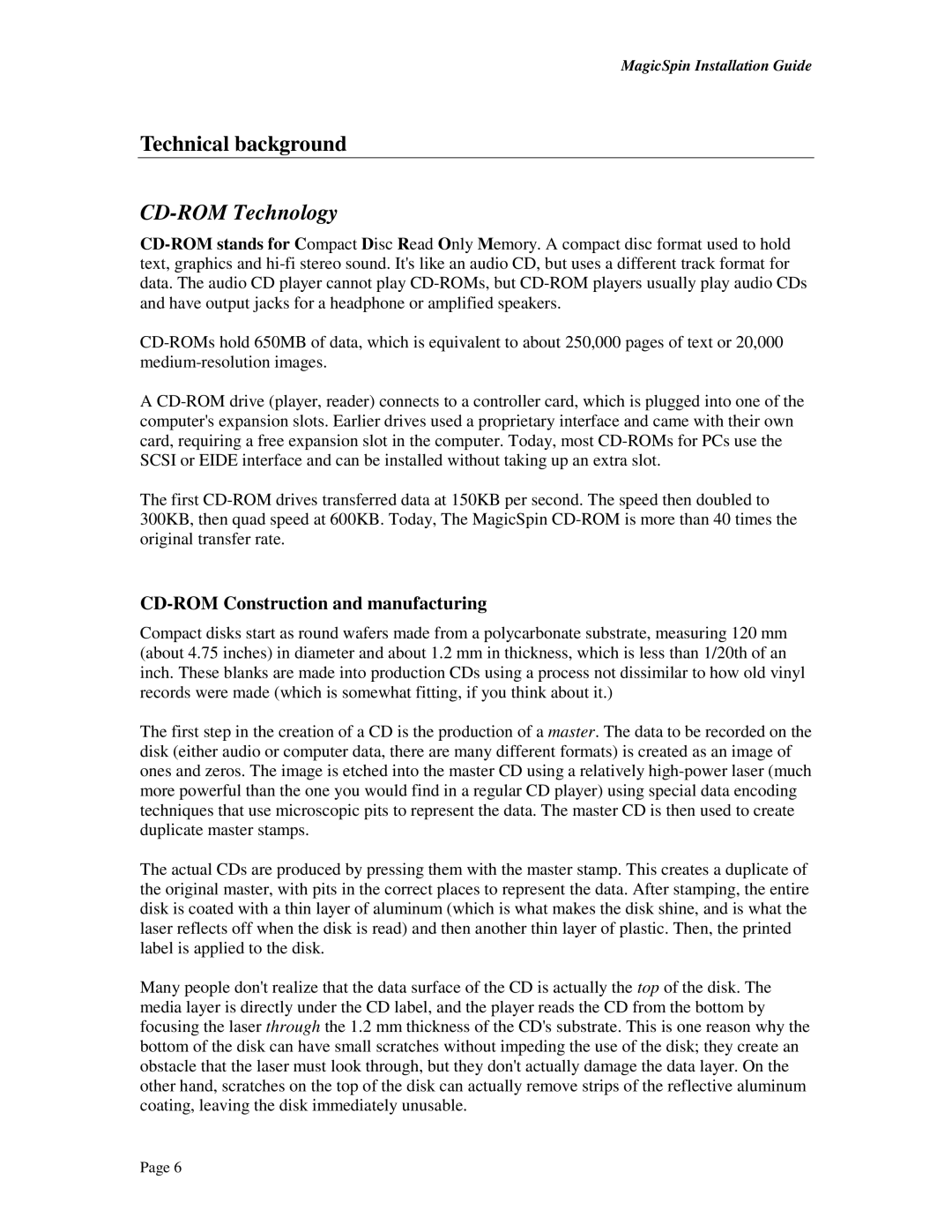MagicSpin Installation Guide
Technical background
CD-ROM Technology
A
The first
CD-ROM Construction and manufacturing
Compact disks start as round wafers made from a polycarbonate substrate, measuring 120 mm (about 4.75 inches) in diameter and about 1.2 mm in thickness, which is less than 1/20th of an inch. These blanks are made into production CDs using a process not dissimilar to how old vinyl records were made (which is somewhat fitting, if you think about it.)
The first step in the creation of a CD is the production of a master. The data to be recorded on the disk (either audio or computer data, there are many different formats) is created as an image of ones and zeros. The image is etched into the master CD using a relatively
The actual CDs are produced by pressing them with the master stamp. This creates a duplicate of the original master, with pits in the correct places to represent the data. After stamping, the entire disk is coated with a thin layer of aluminum (which is what makes the disk shine, and is what the laser reflects off when the disk is read) and then another thin layer of plastic. Then, the printed label is applied to the disk.
Many people don't realize that the data surface of the CD is actually the top of the disk. The media layer is directly under the CD label, and the player reads the CD from the bottom by focusing the laser through the 1.2 mm thickness of the CD's substrate. This is one reason why the bottom of the disk can have small scratches without impeding the use of the disk; they create an obstacle that the laser must look through, but they don't actually damage the data layer. On the other hand, scratches on the top of the disk can actually remove strips of the reflective aluminum coating, leaving the disk immediately unusable.
Page 6
